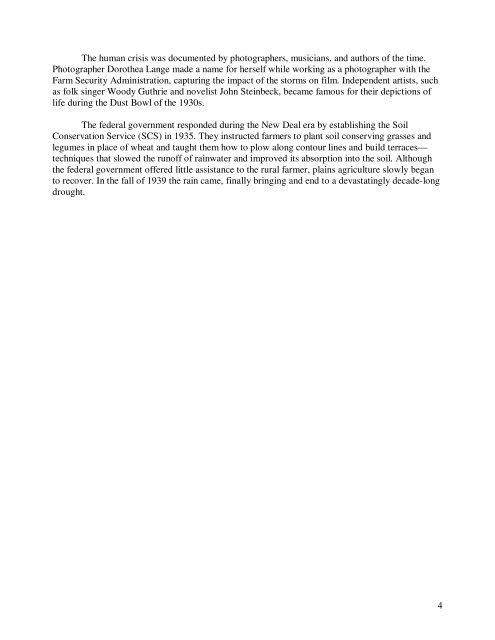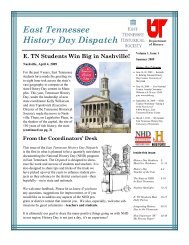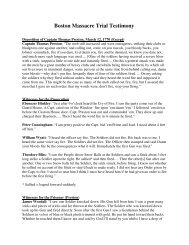“The Dirty Thirties”: The Dust Bowl - Teach American History
“The Dirty Thirties”: The Dust Bowl - Teach American History
“The Dirty Thirties”: The Dust Bowl - Teach American History
Create successful ePaper yourself
Turn your PDF publications into a flip-book with our unique Google optimized e-Paper software.
<strong>The</strong> human crisis was documented by photographers, musicians, and authors of the time.<br />
Photographer Dorothea Lange made a name for herself while working as a photographer with the<br />
Farm Security Administration, capturing the impact of the storms on film. Independent artists, such<br />
as folk singer Woody Guthrie and novelist John Steinbeck, became famous for their depictions of<br />
life during the <strong>Dust</strong> <strong>Bowl</strong> of the 1930s.<br />
<strong>The</strong> federal government responded during the New Deal era by establishing the Soil<br />
Conservation Service (SCS) in 1935. <strong>The</strong>y instructed farmers to plant soil conserving grasses and<br />
legumes in place of wheat and taught them how to plow along contour lines and build terraces—<br />
techniques that slowed the runoff of rainwater and improved its absorption into the soil. Although<br />
the federal government offered little assistance to the rural farmer, plains agriculture slowly began<br />
to recover. In the fall of 1939 the rain came, finally bringing and end to a devastatingly decade-long<br />
drought.<br />
4






